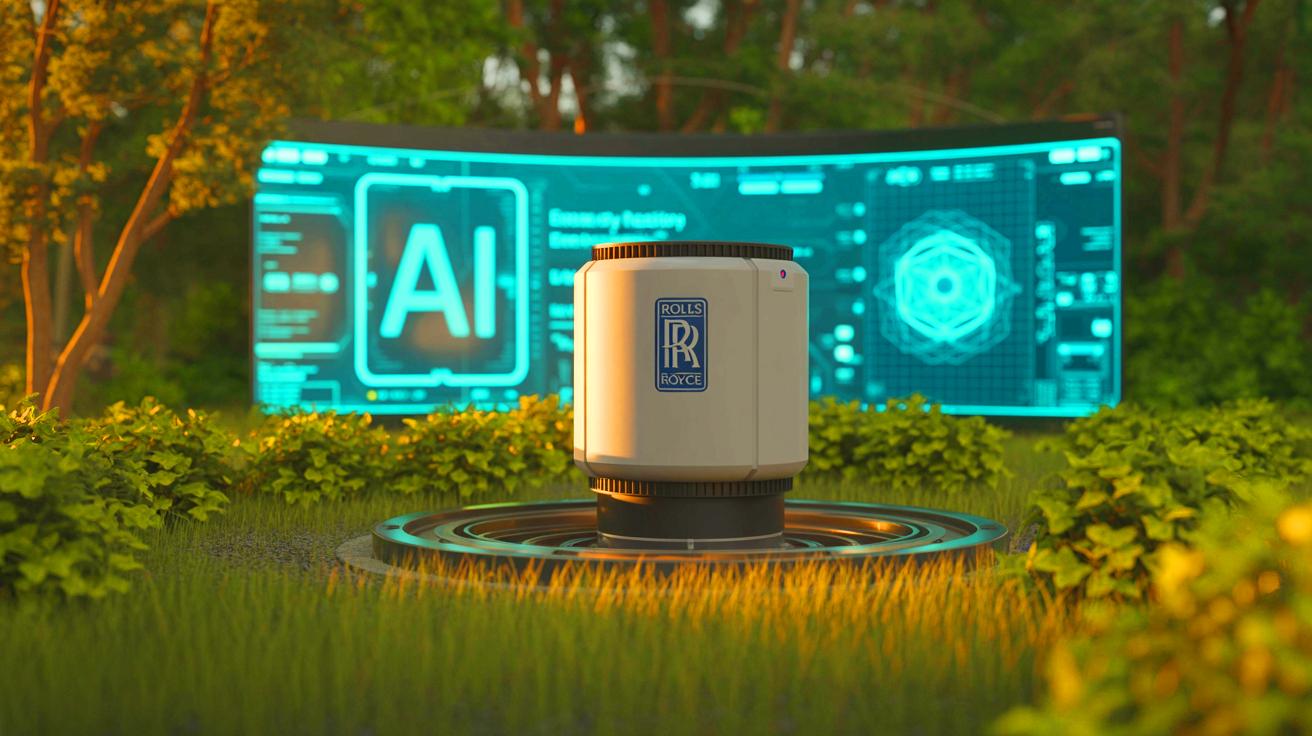- ⚡ Rolls-Royce is expanding beyond luxury cars to dominate the UK market with nuclear-powered AI.
- 🚀 The company aims to leverage its nuclear expertise by deploying small modular reactors for AI energy needs.
- 🌍 CEO Tufan Erginbilgic predicts a demand for 400 SMRs globally by 2050, creating a trillion-dollar market.
- 🔋 Each Rolls-Royce SMR could generate 470 megawatts of energy, powering around 3 million homes.
Rolls-Royce, a name long synonymous with luxury automobiles, is embarking on a transformative journey to redefine its role in the modern world. The company is expanding its horizons beyond traditional engineering to become a leader in the burgeoning field of artificial intelligence (AI). With ambitious plans to utilize small modular reactors (SMRs) to power AI, Rolls-Royce aims to secure its position as the UK’s most valuable company. This strategic pivot comes at a time when the energy consumption of AI technologies is under intense scrutiny, prompting debates about sustainability and environmental impact.
Investing in AI
Rolls-Royce’s chief executive, Tufan Erginbilgic, has made it clear that the company’s nuclear capabilities are a significant strategic advantage. According to him, Rolls-Royce’s expertise in nuclear technology could propel the company to the forefront of the global market. Erginbilgic asserted that no other private company possesses the same level of nuclear expertise, particularly in the application of SMRs. This technology, currently used in submarines, is seen as a key asset in Rolls-Royce’s plan to power AI systems.
As energy demand for AI continues to rise, Rolls-Royce’s ability to supply nuclear reactors could set it apart from competitors. The company’s focus on innovation and leveraging its nuclear expertise could enable it to meet the growing energy needs of AI technologies. Erginbilgic’s confidence in their capabilities highlights the potential for Rolls-Royce to lead in both the energy and AI sectors.
A Bold Prediction
Tufan Erginbilgic has predicted a substantial demand for SMRs by 2050, estimating the need for approximately 400 units globally, each costing around $3 billion. This projection places Rolls-Royce in a prime position to capitalize on a trillion-dollar market opportunity. The appeal of SMRs lies in their rapid construction time compared to traditional nuclear plants, which could significantly impact energy pricing and availability.
Despite the unproven nature of SMR technology, major tech companies like Google, Microsoft, and Meta have already expressed interest by securing energy agreements in the United States. This interest underscores the critical role that nuclear energy could play in supporting the energy-intensive AI industry. Erginbilgic’s vision also includes maintaining a strong presence in the UK market, rejecting the notion that success hinges on a US stock market listing.
Working on the Plan
Rolls-Royce is actively pursuing partnerships to advance its SMR program. A memorandum of understanding with Škoda JS marks a significant step toward producing components for the SMRs. The company’s plan involves installing 3 gigawatts of nuclear capacity using its 470 MWe reactor design, which promises to deliver substantial energy output.
The SMRs are designed to be smaller and faster to build than conventional nuclear plants, offering a practical solution to meet energy demands. Each Rolls-Royce SMR is projected to generate 470 megawatts of low-carbon energy, comparable to the output of over 150 onshore wind turbines. This capacity could potentially power around 3 million homes, underscoring the potential impact of this technology.
“Rolls-Royce SMR is up to eighteen months ahead of competitors in any European regulatory process and, with this first mover advantage, is in pole position to become a world leader in SMR technology and the UK’s premier green export technology,” the company stated.
The Road Ahead
As Rolls-Royce forges ahead with its ambitious plans, the company is poised to play a pivotal role in shaping the future of energy and AI. The integration of SMRs into the energy landscape could revolutionize how AI systems are powered, addressing both practical and environmental concerns. However, the success of this venture will depend on the company’s ability to navigate regulatory challenges and prove the efficacy of SMR technology.
While the path forward is fraught with uncertainties, Rolls-Royce’s commitment to innovation and strategic partnerships positions it as a potential leader in the AI and nuclear energy sectors. As the world grapples with the implications of energy consumption, can Rolls-Royce’s vision redefine the intersection of technology and sustainability?
This article is based on verified sources and supported by editorial technologies.
Did you like it? 4.6/5 (21)
